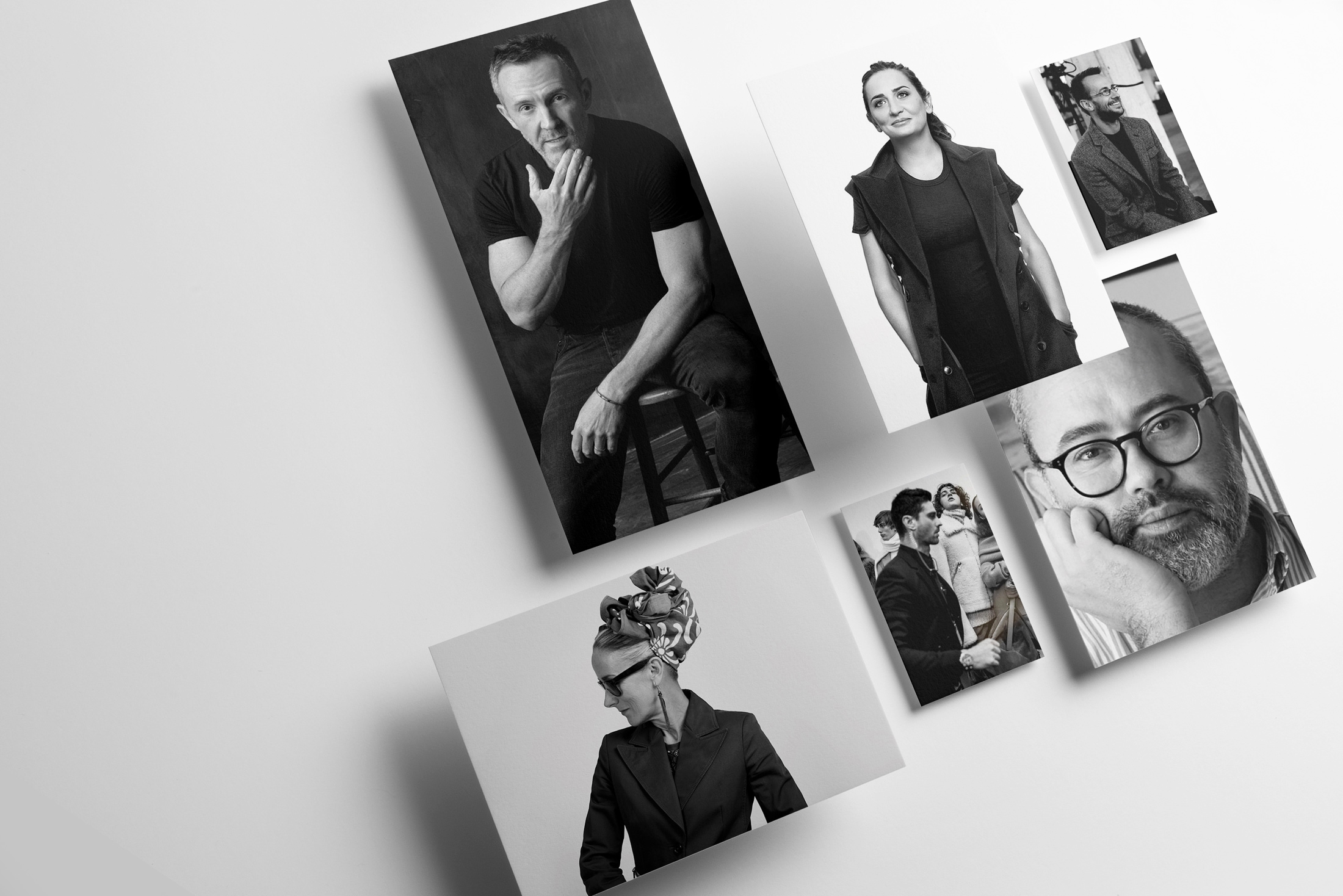The State of The Union Part 2
The Impression Speaks to Experts On How To Approach Economic Recovery, Communications, & Social Responsibility For Growth in 2021
By Mark Hooper
In the second of our reports looking to the future of fashion in 2021, we consider the prospects for brick and mortar retail; whether the shift in seasons and schedules will become permanent; encouraging signs for economic recovery from China and beyond – and how communication strategies need to be backed up by a deeper commitment to social responsibility…
Introduction: A New Global Outlook
The story so far… 2020 has heralded a Year Zero moment in fashion. While it feels there are few certainties after 12 months of upheaval, there is one fact we can all agree on: digital is here to stay and needs to be at the heart of any creative strategy. In this and many other areas, the pandemic has merely accelerated what we already knew. This means that today’s editors need to become influencers themselves – and we all need to embrace livestream and other emerging social media communication tools. The mantra is to think outside the box like never before (and even consider presenting a “Show in a Box”). But, somewhat paradoxically, brands will also lean more heavily on their heritage, embracing the reassurance and confidence it conveys. Sustainability – both in terms of greener policies and in more efficient systems – will become a necessity. That requires reducing wastage not only in raw materials used but also in budget spent.
But the overwhelming message is that optimism is returning – as is the promise of a kinder, more considerate world. As Serge Carreira, head of the Emerging Brands Initiative at the Fédération de la Haute Couture et de la Mode in Paris, announced: “Global luxury brands have been hit hard by the crisis. The main cause is the fall of tourism, which was one of the drivers of growth. Despite the uncertainties remaining, 2021 shall be a year of transition and transformation. Global luxury brands will adapt to the new context: digitalization, authenticity, creativity, inclusivity, and sustainability.”
Part 2 of our State of the Union report will consider these in turn. We will look at the growing demand internally and externally for brands to embrace social responsibility – in the wake of BLM and gender equality; there is an increased need for authenticity and transparency in everything we do. We will consider the future for Brick and Mortar as it faces up to the realities of a digital-first world – and how physical retail spaces can serve as three-dimensional, interactive billboards for your brand. We will drill down on the signs of economic recovery to ask how well China is really doing – and see what examples from history (and the current landscape) we can draw from to show how best to ‘build back better’. Finally, we will weigh up the future for fashion shows and the annual schedule of seasonal collections. In a world of change, will anything be the same again? Perhaps not – but as we’ll see, this can be a cause for genuine optimism and excitement … as long as we grasp the opportunities with both hands.
Demonstrate Your Commitment To Social Responsibility
In the wake of BLM, the unprecedented assault on democracy in the US, the #metoo movement, and countless other wake-up calls in 2020, it has never been more important for brands to show transparency and accountability when it comes to social responsibility. But this isn’t something merely to be communicated by your choice of model or collaborator – it needs to be accepted and embraced at the heart of your organization. Your customer knows a fraud when they see one, and they will vote with their feet.
Caryn Franklin MBE, a former Fashion Editor of i-D magazine and presenter, is now a hugely respected academic and commentator on fashion and identity – as well as Visiting Professor of Diverse Selfhood at Kingston School of Art. As such, she is perfectly placed to comment on how, while the response to the BLM and pro-diversity protests from the fashion industry were on one level encouraging, brands are still in danger of falling under the “lazy and superficial” tag – essentially putting diverse faces in their ads and thinking that’s enough. Having acknowledged the problem, what are the next steps she’d like to see from fashion?
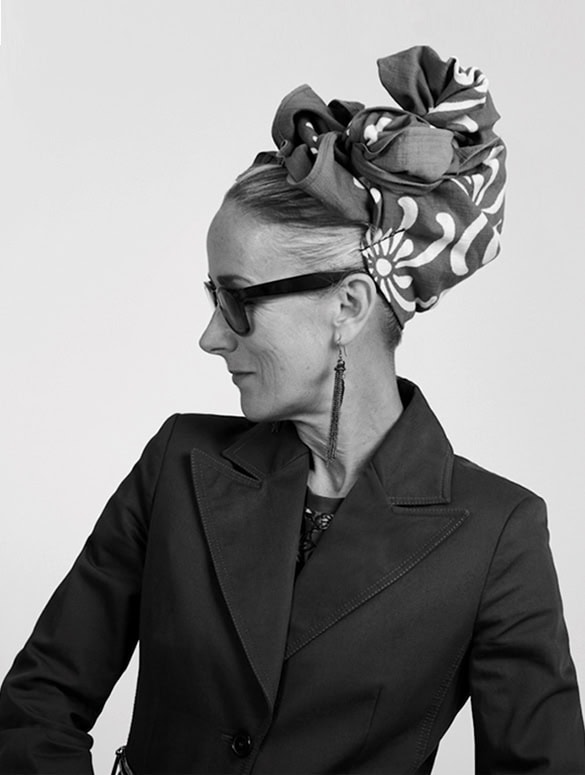
White leadership reveals a ‘minimum effort,’ protocol – even an exploitative manipulation, if, in this climate, it monetizes people of colour in front of the lens only. Yes, we need to see a range of human identities in our imagery, but brands must now include those same diverse identities where decisions are being made at a leadership level.
— Caryn Franklin MBE, Visiting Professor of Diverse Selfhood at Kingston School of Art
“All of us who support race equality are demanding to see black creative teams and black CEOs on the company website,” Franklin continues. “Don’t bother trying to make a credible marketing message without this authentic engagement. And stop denying the problem or making excuses for lack of representation. We want to know how you will fast-track better racial diversity into your company – now.”
This is something Lucien Pagès, founder of the eponymous communications agency, puts in equally unequivocal terms. “People are really focused on this topic, and they really want to see brands show in their communications that they are doing the job of being more inclusive and responsible,” he says. “But this is not a challenge for communications: it’s a challenge for companies to really change.”

Communication is only a tool to show that you have changed your behavior, so the starting point is not for me as the PR. That’s why, if we have to help brands, I’m saying I cannot help them if they don’t do the job at the beginning of really changing their behavior themselves. It all has to be authentic because the audience is watching and wants accountability.
— Lucien Pagès, Founder of Lucien Pagès
“Communication is only a tool to show that you have changed your behavior, so the starting point is not for me as the PR. That’s why, if we have to help brands, I’m saying I cannot help them if they don’t do the job at the beginning of really changing their behavior themselves. It all has to be authentic because the audience is watching and wants accountability.”
Marco D’Angelo, founder, and Chief Strategist at Platform PR, picks up the theme:
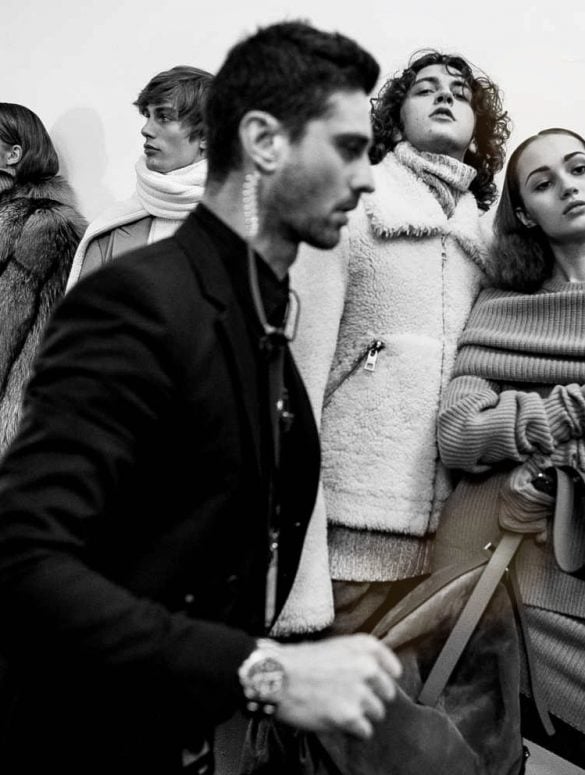
Brands need to understand that the consumer is constantly watching, 24/7, right now. They’re at home, most of them – and maybe they have very little to do, so they’re scrutinizing everything you do. So before you do anything – especially the big houses – you really need to have a focus group, dissecting everything you’re going to do in your strategy and figuring out, is this the right step? What else do we need to do? Considering all the components – looking at the whole puzzle together. Yes, you will probably be scrutinized no matter what, but common sense is vital at this point.
— Marco D’Angelo, Founder and Chief Strategist at Platform PR
“As multiple studies show, diverse perspectives from a range of humans round the table is far more conducive to increased creativity, efficacy, and customer engagement,” continues Franklin. “Represent your customer at board level, and you have a broader perspective to act authentically from (remember the massive Dolce & Gabbana blunder). One could say that if you don’t, you are engaging in the act of wilful sabotage in this day and age. Never mind about campaigns, let each CEO take charge; show us your plan and your commitment to change. I want to see this on your website, your newsletter, and I want regular updates. If leaders aren’t doing this, we have to question whether they are the right leaders in the first place.”
This realization that change needs to happen behind the scenes – not just in front of the camera – is one that is being led by the customer, with many brands playing catch-up. “Exactly! A lot of people missed this point, so it was totally unexpected for them,” says Pagès. “Because, in fashion, it’s often the image that matters. So initially people thought that using black models was enough, that they were doing their part – and after they were confused or surprised to see that it was not enough, that it was about including a diverse range of individuals in your decision making, behind the scenes, at all levels of a business.
You need to employ a diverse range of people in your organization! That’s what was really interesting; seeing the fashion industry finally realize that it is not just about the images. Because we are used to playing with images in communication. But people see through that. People don’t want bullshit anymore!
— Lucien Pagès
And, with social media giving everyone a voice, brands are finding they have nowhere to hide. “Increasingly, we are no longer compliant consumers, we are citizen participants, and many white people, myself included, have educated themselves to expect and demand more community engagement on the issues that matter from the brands they support,” says Franklin. “Race shame and race equality are topics we are all talking about on social media. The business imperative of creating value cannot be limited to simply maximizing today’s share price, now that the rampant asset-stripping nature of capitalism and its assault on people and ecology has been exposed.”
True value going forward will be a long-term commitment to race equality, fair trade, and sustainable practice. We citizen participants will be watching and reporting to our communities.
— Caryn Franklin MBE
“I think the next phase of this is going to be around authenticity,” concludes Trey Laird of creative agency Laird+Partners. “That means doing the thing that’s right for the times you live in and your brand: your purpose. Because that’s what you’re about, not because you think the public wants you to be doing it.”
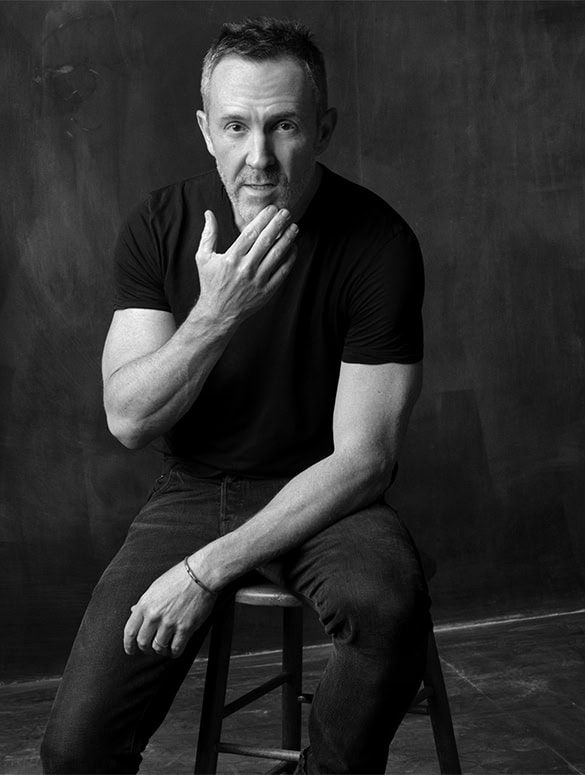
There are some brands that come across as less authentic, I think: just reacting to things because they feel that’s what they should be doing. Which on one level is still a good thing, but there are other brands for whom it just feels like that’s who they are. I think the public starts to see the difference pretty quickly. Like with COVID, it took something so horrific to get people to start to shift. But hopefully, there can be some real movement that comes out of these times.
— Trey Laird, Founder and CEO of Laird+Partners
“One of the things that I think is really important is the brand without values in 2021 is absolutely useless,” says D’Angelo. “So you need to really understand where you want to head with your mission. Is it sustainability? Is it charitable? Is it social justice? What are you fighting for? It’s almost impossible to carry on with your mission without one of those. Or all of them. You really need to take a step back on your 2021 strategy and understand what your brand is about. Because otherwise, you’re going to be left behind.”
Carreira agrees that a shift in priority is required in order for brands to reflect the times they find themselves in. “Luxury remains a business of offer, not a business of demand. The focus for brands is to embrace the global changes generated by the crisis by integrating them in their core business.”
But let’s end on a tone of positivity. There are plenty of signs of encouragement – and examples of brands getting the balance right – for us to draw upon. “I’m very excited by the shifts I see in fashion,” says Franklin. She cites London-born Samuel Ross, the 28-year-old CEO of the award-winning A-Cold-Wall, who has invested in other black businesses to help and highlight the lack of Venture Capital given to black businesses. “Let the big corporates follow suit and mentor black-owned companies. Tell us about that in your marketing.”

That said, she sees signs that positive change is already happening. “I have watched an area of my industry mobilize in the last year and am excited to be part of the solution, not the problem.”
Fashion Academics Creating Equality (FACE) is a vital challenge to the white-centric education we have all had in fashion. Black academics are vital to ensure the progression of black students – and white students are benefiting from race knowledge they were never previously given. Realizing the race perspectives they have missed and demanding change to the limited learning around culture, identity, and behavior, this age group is very focussed on authenticity and sustainability, which bodes well for future ethics and equality.
— Caryn Franklin MBE
What Future Is There For Brick And Mortar?
The carnage on the high street in 2020 means, sadly, that some fashion brands will never recover. A drop in footfall (in many cases to zero) coupled with the boom in e-commerce during lockdown means that physical retail space is faced with having to reinvent its raison d’être if it is to survive at all. We have been so focused on the move to digital, but as we emerge from the pandemic, the focus needs to be on offline interactions as well. What does brick and mortar look like in the new, uncertain high street of the future?
Increasingly, it seems that the shop window will become the shop itself – and vice versa. With the pressure to fill empty units, landlords will look to encourage short-lease, pop-up opportunities – which more savvy brands can exploit in order to make their retail space itself become part of a joined-up communications campaign. Just as fashion weeks offer the chance for amplification of messaging as the audience spontaneously share imagery (at no cost to the brand) on social media, so we will see stores dressed to impress the Instagram and selfie crowd. This is something Faye McLeod, LVMH’s Visual Image Director, readily admits is a key consideration in her role. “I’ve never worked at a company where everybody photographs themselves outside the windows so much! I remember when I first started at Vuitton, I thought, I want to make the backdrops for all those customers to stand outside and take their phones out and take their photos. I want those backdrops to be so amazing that it means something. So we started by trying to make these really exciting windows that make people dream.”
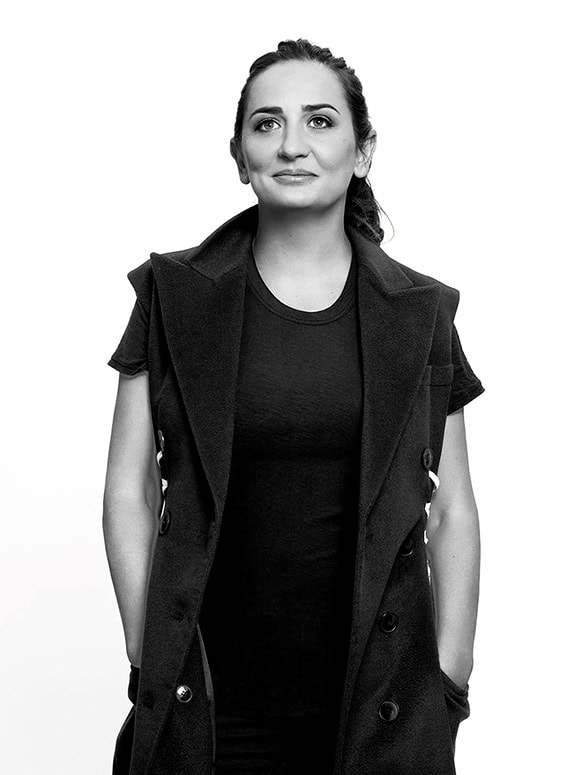
I don’t really think e-commerce is that different – it’s just like the old catalogs you used to get, so I don’t see why creativity can’t be interpreted on a screen there as well as a shop window. You still need creativity to engage the viewer – I look at my iPhone as a window.
— Faye McLeod, Visual Image Director for LVMH
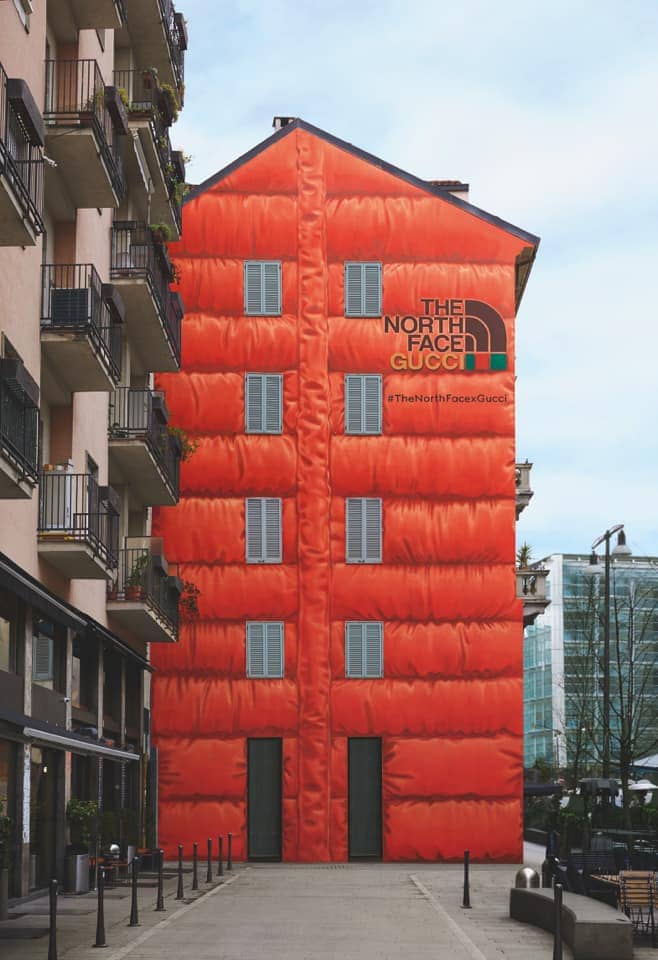
Witness Burberry’s “social retail” store in Shenzen or the giant puffa-clad The North Face x Gucci building in Milan’s Largo la Foppa to see how brick and mortar still has the ability to create a tentpole moment for your brand – and translate a physical installation into a cost-effect digital campaign.
“In 2021, there will be a lot of retail space available, so there will be an opportunity to spend on the retail landscape,” says D’Angelo. “I think people will – and should – do variations on pop-ups, where they can establish the feel and direction of the brand. We’re considering this with Augustinas Bader – perhaps this is a way to get the customer’s attention, being mindful of COVID but knowing there is a positive feeling in 2021, with the vaccine coming in March. So once you’ve established whether that will fall in Q2 or Q3, at least be able to have that opportunity of brick and mortar. Because even if you’re not going to see the same spending power, at least people can come and experience it.”
I think the customer will just want to come and shop by themselves, they won’t want to be bothered by salespeople, but they’ll want to come and see and understand, and then they can go back home knowing they have the tools to purchase. You’re going to see a lot of strategies in the market that we’re already starting to pick up – such as Q-scannable codes, so you can save it for later and decide at home.
— Marco D’Angelo
In essence, the retail model will be to sell the fantasy via the window and more experience-led in-store events, encouraging people to then go online to purchase. Significantly, online marketplaces such as Tmall in China are moving into selling pop-up physical retail spaces to brands as well – so not only will physical retail have a push effect on e-commerce, but digital strategies will start to embrace physical environments too.
“I think they have to be connected,” says Laird. “Your digital experience and the physical have to be speaking the same language, despite having different purposes. But I think physical retail still has validity and power. It’s almost like a big ad that you walk inside. And once you’re in it, you get to feel something.”
There’s no literal reason to go in anymore – you can get anything you need without ever having to leave your house. But you have to want to go in. And you’ve got to make that experience something exciting and interesting. It goes back to that ingenuity and creativity – dealing with the times you’re in an innovative way. If you can do that in ways that are exciting and that give some kind of timeliness, it totally makes sense. And I don’t really see that changing.
— Trey Laird
Incidentally, as a footnote, while the general mood for brick and mortar had been bleak throughout 2020, data from Barclaycard in the UK reveals that spending in independent stores rose significantly as consumers chose to shop on local high streets over shopping centers and out-of-town malls. The figures – specifically focused on ‘essential’ food and drink shops, butchers, bakeries, and off-licenses, which remained open throughout the pandemic, but also incorporating fashion retail when it was free from restrictions – show a 28.6% year-on-year increase.
How Encouraging Is The Chinese Recovery?
In the second half of 2020, the focus began to shift towards China as the country emerged from the pandemic, and positive signs of recovery in the luxury market were seen. But should this be taken with a pinch of salt? And can we learn from previous economic crashes by seeing who historically bounced back best – and how?
Let’s take the historical perspective first. The post-War economic boom in the US in the 1940s was due to a number of factors: Roosevelt’s retooling factories from military to civilian production for one, coupled with a boom in not only individual spending but also personal saving, as the public found they had more dollars in their pocket. In her book, A Consumer’s Republic: The Politics of Mass Consumption in Postwar America, Lizbeth Cohen reports that, by 1945, Americans were saving an average of 21% of their personal disposable income, compared to just 3% in the 1920s. Current figures suggest much the same situation, with Andy Pemberton, Director of data visualization company Furthr Ltd, predicting a similar post-pandemic bounce, with household debt at relatively low levels in the US and savings higher than previous equivalent situations as consumers emerge from their lockdown bubbles. Furthermore, the 1940s boom was a sustained one in the US, where GDP increased from $200bilion to $300billion from 1940 to 1950 – reaching $500billion by 1960.
The stimulus was key to this recovery. In the 1920s, the introduction of hire purchase and credit, coupled with production and tech revolutions and the first golden age of advertising, all encouraging consumer confidence. The US has typically embraced a laissez-fare, free-market economic policy and a lowering of taxes – although in 1922, President Warren G Harding introduced a protectionist policy – we’re likely to see the opposite in 2021 as Biden rolls back Trumpist policies.
But rather than the West of the early 20th century, let’s fast forward a hundred years to examine what seems to be working now. Launchmetrics predicts that Chinese consumers will account for around half of all global spending on high-end brands in 2020 (up from 37% in 2019). It reports that the Chinese market, “despite the pandemic, has only slightly been slowed down – having a more rapid market recovery compared to other economies in the West. This trend has been reflected in the strategies of brands such as Fendi or Gucci, who have adapted their messaging to the Asian market”.
The projected online turnover for China in 2020 amounts to $260.5bn (up from $228bn in 2019). This is more than the US ($90.3bn) and EU ($130.8bn) combined. (Source: Launchmetrics/Statista Digital Market Outlook). What’s more, China is already well primed for the shift towards digital: Launchmetrics further reports that the country saw some 57 million more internet users in 2018-19 – with consumers spending 58% of their time online. (This compares to one million new internet users in the US – with consumers spending 54.1% of their time on internet activity.)
There is, however, some evidence to be cautious before hailing the Chinese model as the way forward. A December 2020 survey by China Beige Book suggests that the bounce back may not be as swift as first thought. Around two-thirds of the 3,300 Chinese executives polled expect it will be Spring 2021 before sales, profitability, and hiring returns to 2019 levels. Although economists expect China’s GDP to increase by 2% this year (compared to drops of 4.3% and 8.3% in the US and EU, respectively), consumer spending has been more sluggish than expected, while an index that factors in prices for consumer goods fell for the first time since 2009 – and retail sales are still down 5.9% for the year through October 2020.
That said, the signs are that China’s economy is far healthier than most comparative markets. “For me, what I’ve seen and taken a lot of understanding from is the Chinese market, where they were able to get back on their feet,” says D’Angelo.
What we need to understand, going back to communication for 2021, is how we can take China as an example? They are still key players in communication. They still will be. Having clients myself in Asia, I’ve seen how they are conducting their business, and it’s been really refreshing.
— Marco D’Angelo
One similarity we can draw with the 1920s US model is how China’s confidence has been bolstered by its home-grown luxury sector. Whereas previously luxury brands in the West sought to attract the burgeoning Chinese consumer-tourist demographic (who traveled to the US and Europe with new Yuan to spend), Tom Griffiths, Commercial Director at marketing agency VERB China, states that the situation has now reversed. “For those brands that have relied upon being cool outside of China to get consumers’ attention from inside China, it is not going to be as easy as that anymore,” he told Campaign Asia – and they will now be competing with local brands that have seen their market share grow during the pandemic. Expect to see a new breed of Chinese luxury brands flexing their muscles in 2021. And, as we’ve seen with digital, the priority of having a dedicated, China-focused team has moved “up the ladder” – meaning more senior executives will have to get up to speed fast and start to engage better.
“I think what they did at the beginning as they were the first to be able to introduce their new technology to do events right away,” says D’Angelo. “So in less than three weeks, they were able to have all the PPE in place, all the technology to be able to take customers in store. With a couple of my footwear clients, for example, they were able to have a sale in place, so they were able to get rid of the merchandise as soon as possible. That was really productive for them. They are so good with their digital e-comm and how they are able to markdown and sell products – because they were so successful at that, they didn’t struggle in their market, which was refreshing.”
“I’m curious to see how people will return to a sense of normality,” says Pagès.
It’s too early to be excited as the situation is still uncertain and quite scary. So I’m more intrigued about how the fashion industry will come out of all this mess. If you look at China, it is already performing super well for many brands. So the luxury industry is quite solid: I’m surprised that the recovery has been so fast there.
— Lucien Pagès
Will Shows – And Schedules – Ever Be The Same?
As British Vogue describes it, the “new 365-day stream of content promises to continue well into 2021”. For everyone – consumer, media, fashion house, and marketers – this has only led to confusion in the short term. “There’s this new thing – and I’m thinking of people from my own industry, I don’t have any feedback from the wider world – where people are completely lost because, since brands can now show what they want, when they want, you don’t know what [season] they’re showing,” says Pagès.
“Before, there was Fashion Week in September, and after that, there were brands who would show pre-Fall already; some cruise; some would show the main collection… but as it was delayed, they all arrived almost together, but with different seasons! So people – and I mean people who really follow fashion and brands – ask me, ‘I’m lost! What season is it?!’ ‘Alors, I will explain: for this brand, it is this season; for this brand, it’s this; for this brand, it’s cruise…’ etcetera!
— Lucien Pagès
“So I know people were critical with the fashion weeks,” Pagès continues, “but in a way, it was a number of different things: the problem was having to concentrate. If people mix everything up, you have to really work hard to understand what is going on.”
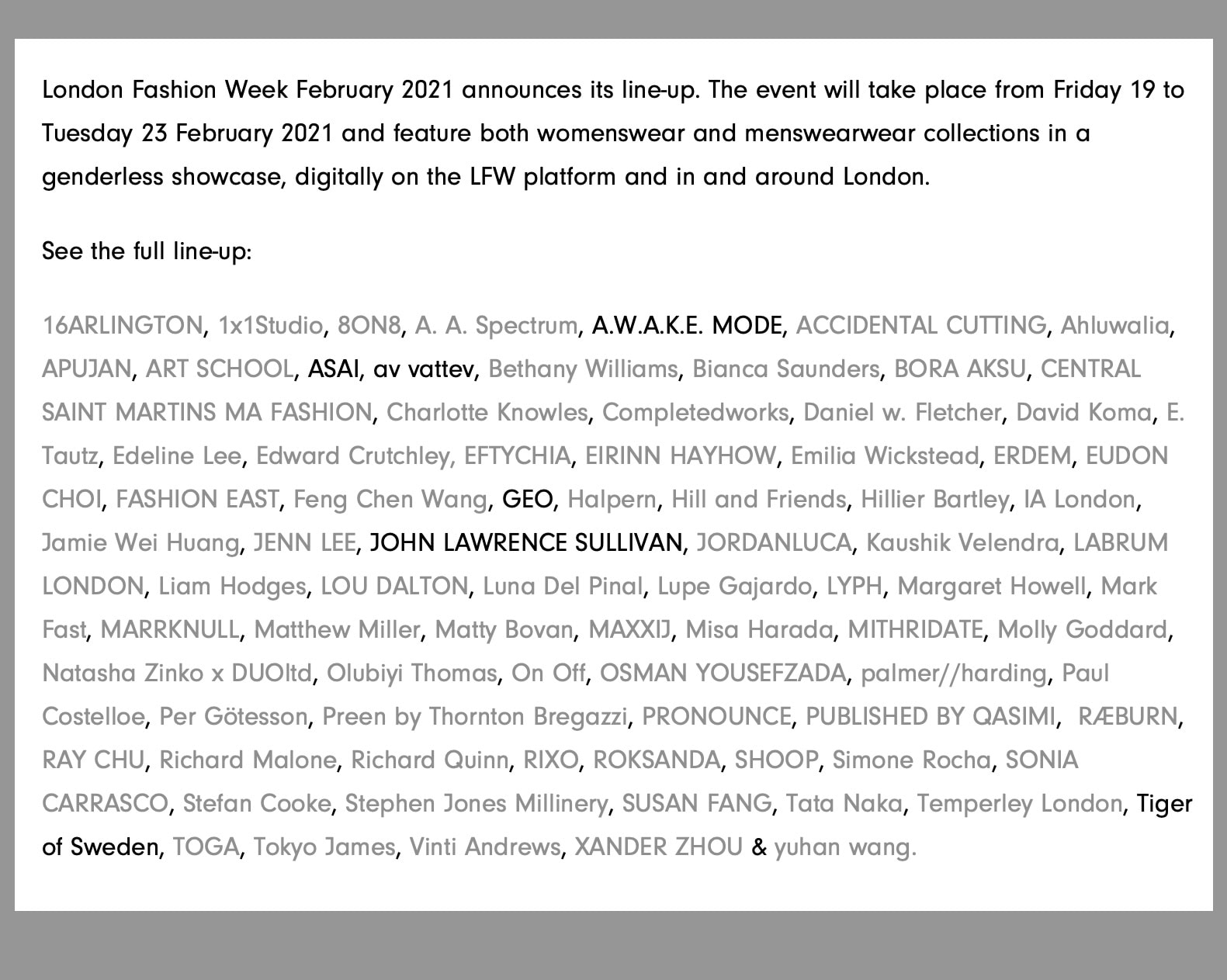
The confusion looks set to continue into Q1 and Q2 at least. The first London Fashion Week is now scheduled for 19-23 February – once more a “genderless” showcase of men’s and women’s collections together, and penciled in as another physical-digital hybrid. This approach was largely well-received in September, but with the UK government hinting the current lockdown could continue into March – and with London Mayor Sadiq Khan declaring a “major incident” this week as the city’s hospitals struggle to cope with the number of COVID-19 cases – the physical element seems unlikely.
What’s more, Pitti Uomo chairman Claudio Marenzi has announced that the event has been pushed back from January to 21-23 February, tentatively “in Florence” – although again, the geographical location may be irrelevant depending on the pandemic. Clearly, this means it directly clashes with LFW – exacerbating the issue of screen fatigue for those observing remotely.
Laird believes that something has to give.
It still goes back to the idea that, between Spring-Summer and Fall-Winter and pre-collection and cruise collection and whatever else, six or seven times a year – there are all these different events that have to be promoted in lookbooks and product and shot… it’s so much stuff from all of these hundreds of brands. So hopefully, there’ll be a little bit more of an edit.
— Trey Laird
Might we see a return to more personal, intimate, limited-number, salon-style shows when we do finally welcome back physical fashion weeks? Pagès thinks so. “At the end of the day we have to promote clothes, we have to promote the fashion shows or a store opening… what we have to promote is quite classic. Even if it’s a luxury need, it’s still a need. That we know, it’s not like we promoted a new business concept like Amazon or something at the beginning [of the pandemic] or a new revolutionary app from Silicon valley that drastically changed our way of consuming. We are promoting something quite traditional. For example, we have a luxury bag, it’s well made in Italy, of course. It has the brand name; it has the logo: so that’s the object. But we have to find an absolutely new way of promoting these super traditional objects and speaking to a consumer that is quite well identified as a man or a woman who has the ability to buy luxury goods; or the new millennial who loves fashion. It’s not that we operate in a totally new world – because the fashion industry is still quite traditional. People love to shop in a certain way. They love the logo; they love the storytelling around the brand. So we are asked to be really surprised with elements that are quite traditional.”
What’s the solution to all of this? David Hieatt is co-founder of Hiut Denim and The Do Lectures – a highly successful, High Net Worth version of TED Talks, hosted on rural farmland in Wales (think A-listers, influencers and CEOs sat around campfires and in airy barns, putting the world to rights). He remembers a mantra he was first taught as a young advertising copywriter that he feels is more relevant now than ever: “Put the money in front of the camera.”
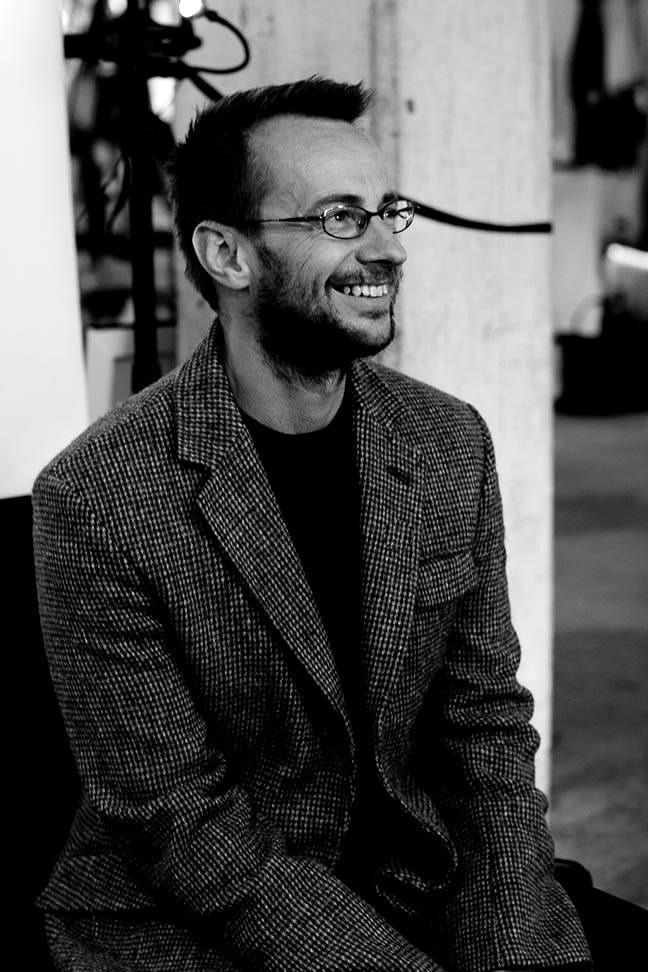
In other words, when making TV commercials, the aim was always to “Make sure the money goes in front of the camera and not behind it. If you had a small budget, spend the money on a great actor/actress. A remarkable location. A brilliant animator. But have a small crew—Fly economy. And stay in a cheap hotel. It was a good rule of thumb for making sure the customer could see where the money went. That ethos can apply to many aspects of your brand. Especially product.”
— David Hieatt, Co-founder of Hiut Denim and The Do Lectures
If there’s one lesson to be taken from this, it’s to be confident. Confidence grows confidence, as we’ve seen in China. Confidence in your ideals: in your commitment to doing the right thing – socially, environmentally, and ethically – breeds trust. Confidence in your heritage – in the classic and the traditional aspects of luxury – reveal your quality. Confidence in your ability to sell – in shop windows, on screens or via the catwalk – is the key to any business. Trust your instincts, don’t be intimidated by the situation, communicate your qualities and your values. Things will be better again. Different, but better.
Caryn Franklin Photo | Sarah Creswell
